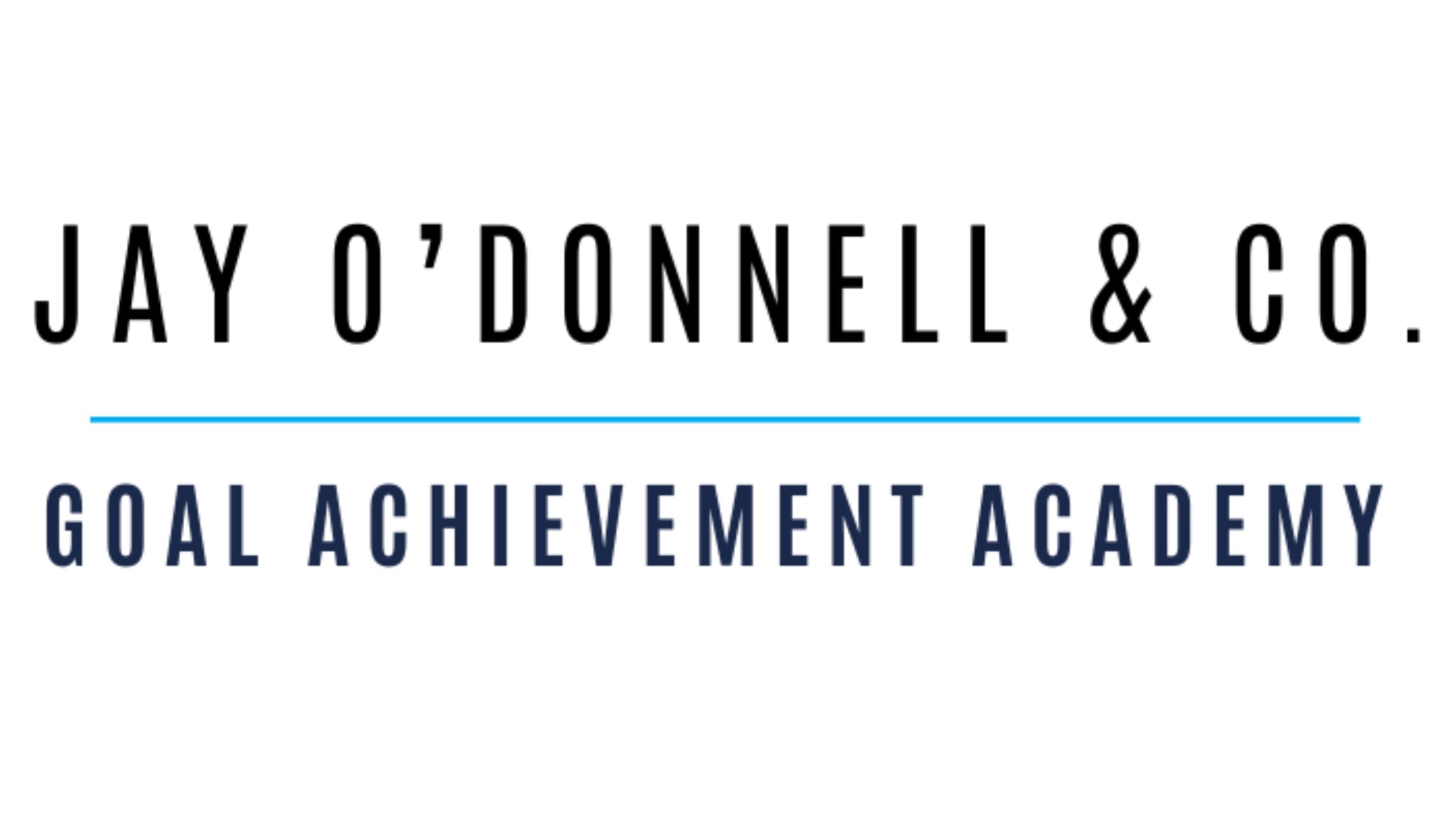Welcome to our official, in-depth Franklin Planner review.
As you may already know, I’ve used a number of different planner/goal achievement systems over the years. And Franklin Planner (by FranklinCovey) is one of my favorites.
But in order to give you a fresh perspective, I had one of my students try the system – and tasked them with writing their own review, based on their brand new experience of using the Franklin Planner for the very first time.
So what follows is a true first-hand account of the entire process of using a Franklin Planner, as told by someone who’s unbiased – who has never used the system before.
So let’s get into it and talk about how the Franklin Planner performed when compared to other systems that we’ve reviewed on this site.
The Basics – Getting Started With The Franklin Planner
When I first started looking at the FranklinPlanner Store, I was actually really blown away by how many different products they offer.
And so, for me, that was actually the first step in the process—trying out which FranklinCovey product to try first.
One thing that I really liked about how FranklinCovey structures their different planning systems is that they basically all consist of two different elements.
- There are the covers, which are basically like storage binders and sleeves that you put the inserts into
- And then there are the planners themselves, which are for the most part created as inserts that you slide into the binders
The thing I like about this system is that it gives you a really professional-feeling planner at a more sustainable rate, since you only have to buy the binder or cover one time, and then you can just buy refillable inserts to go in the binder.
So for me, this was a pretty big value add.
One thing that you may think to yourself is:
“Wow, with the refillable inserts, I could save a lot of money in the long run by using a Franklin Covey planner, as opposed to some of the other planners on the market that you just need to keep re-buying as a whole over and over again.”
But as weird as it sounds, this isn’t exactly true.
(We will also cover the math on this in just a moment.)
Now, let’s talk about exactly which planner I decided to buy.
Which Franklin Covey Product Did We Choose?
I decided to go with the Daily Undated Wire-bound 31-Day Planner for the insert. I chose this specific insert for a few different reasons.
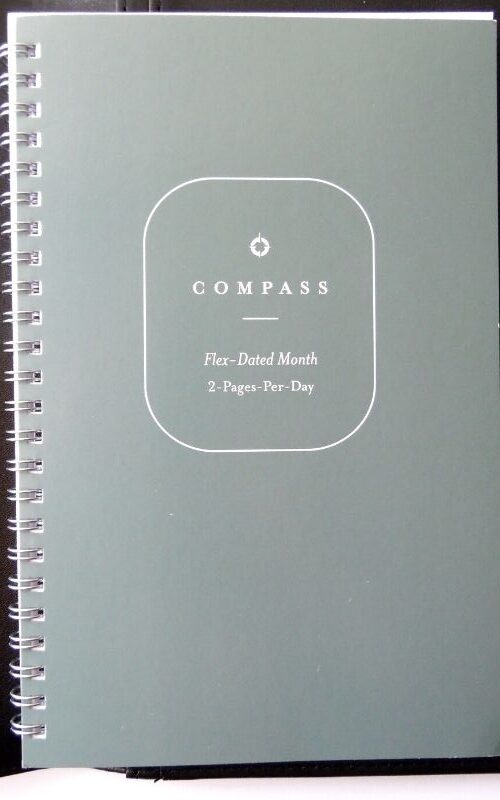
Firstly, because it’s undated—and that’s important to me. I always prefer to have some flexibility when I’m using a planner. And so, regular ‘calendar books’ or ‘dated planners’ always feel like they’re just a bit less flexible.
I also chose this insert because I liked the way it was laid out and formatted. But we will talk more about the system in a moment.
Next, let’s talk about the cover/binder that I chose.
I chose the FC Basics Slim Open Wire-bound Cover for the cover.
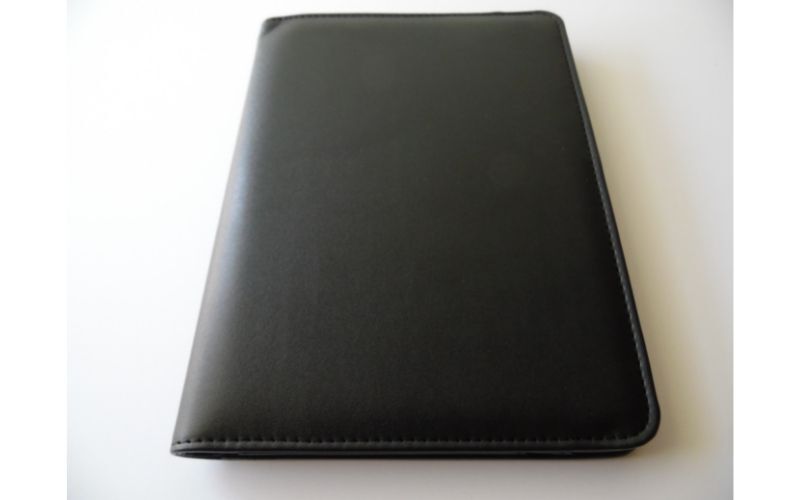
This was their standard black leather-feel binder.
Keep in mind, they have all kinds of options.
But I chose this one because it was simple, professional, and seemed well made.
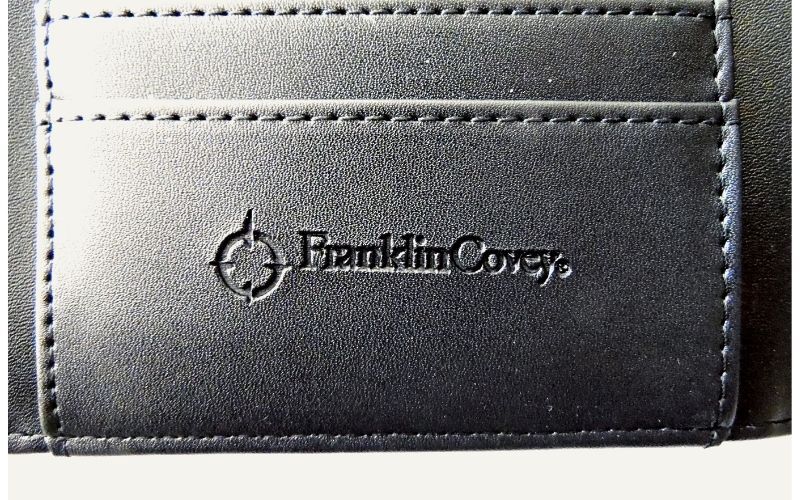
(I’ll talk about unboxing it and my first initial reaction to it in a moment.)
But now, let’s talk about the price.
How Much Does The Franklin Planner Cost?
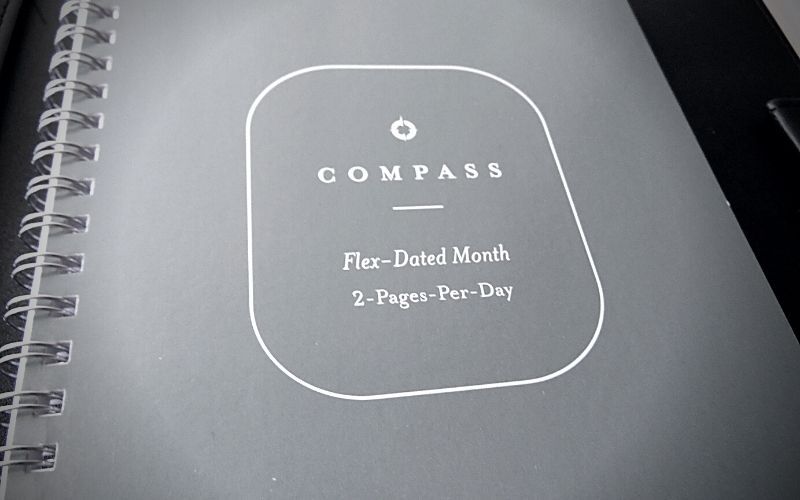
When factoring the price of a Franklin Covey Planner product, you really need to take into account not only the product you’re buying, but also how much it will cost you (and/or save you) to refill that product in the event that you plan to use it in the long term.
So for example—I bought the Daily Undated Wire-bound 31-Day Planner, along with the FC Basics Slim Open Wire-bound Cover in black.
The 31-day planner insert cost me $7.95, and the binder cost me $49.95.
Now, right from the get-go, this isn’t a super cost-effective option.
This brings the planner cost total to a pretty significant $57.90 for a setup that will only last for one month.
And that’s pretty expensive.
But, since I only need to buy the insert to refill it and use it again, let’s do the math on that.
Let’s say that I’m going to use this particular Franklin Covey planner system setup for one quarter—which is a total of 3 months.
When we do the math on that, we see that the total amount spent would add up to $73.80.
This makes it more expensive than both the Full Focus Planner and the Self Journal, which both offer you tools for goal achievement in the timespan of one quarter.
But when we add up the numbers over the course of, say, an entire year instead—we come up with a total of $145.35. That includes 12 inserts and a binder.
At this point, you may begin to notice that the Franklin Covey system is starting to be comparable (or that it might even save you some money in comparison) to other comparable systems.
For example – if you buy a year’s worth of Self Journals, you’ll pay a total of about $100.
And if you buy a year’s worth of Full Focus Planners, you’ll pay $138.97 if you subscribe.
This makes the Franklin Planner the most expensive option. But it’s not so expensive that it’s heads and shoulders more than the others in price.
It’s a few dollars more than the Full Focus planner when you plan it out to a year; which isn’t too big of a difference.
How To Get Franklin Covey Planners Cheaper
One method that you could use to get cheaper access to the Franklin Covey planner system is to just buy the inserts from Franklin Covey, and then to use those inserts with cheaper binders that you can pick up at any local office supply store.
Those binders wouldn’t be as nice (the legitimate Franklin Covey binders are amazing). But hey—you can pick up a cheap binder for about $12 at your local office store, and then order 12 months’ worth of inserts to bring that yearly planner total down to about $107.
That puts it right between the price points of the Self Journal and the Full Focus Planner—and that’s not bad at all for enough planner system to last you an entire year.
With all of that being said, however, I would recommend that you go ahead and order the cover from the Franklin Planner store. It’ll fit perfectly, there’s be no quality surprises, and you definitely won’t regret it. Their binders/covers are truly beautiful. Personally, I was thrilled with mine.
Opening Up The Franklin Covey Planner For The First Time
Alright.
Now let’s get into the details of the actual planner.
When I first opened up my Franklin Covey Planner, I was pleasantly surprised.
The insert was straightforward and simple—but it looked and felt great.
The binder/cover was actually beautiful. Even though it was a standard Franklin Covey binder (they offer several more options that are a lot ‘fancier’ than the one I ordered), I couldn’t believe how professional and sleek it was.
It was most definitely a beautiful binder (the best that I had ever owned, in fact). And sliding the insert into it and getting ready to get started with my goal-setting test really felt really satisfying.
The Franklin Covey System – Does It Work? And Is It Worth It?
The first thing I noticed about the Franklin Covey system is that it’s actually really straightforward and simple.
However, this doesn’t mean that it doesn’t also contain a lot of depth.
In fact, when you first look at the insert, you may think to yourself:
“Wow, this is pretty simple. It’s really just a calendar book.”
But nothing could be further from the truth.
This particular insert used a process called the Compass Planning System.
Now, Franklin Planner has its own YouTube channel, which you can view here.
They don’t have a lot of videos that are new, but there are some high-quality workshops published on their channel.
With that being said, their channel seems to focus more on the foundations of goal settings and time management in-general. And their planners seem to be tools that were designed to act as supplements to their system.
I found one video series in particular that goes through how to use the Franklin Covey system, and also how to incorporate the daily planner into this system. This three-part series includes the following videos:
Franklin Planner Training, Part 1: Time Management
Franklin Planner Training, Part 2: The Productivity Pyramid
Franklin Planner Training, Part 3: The Paper Tool
I would recommend watching this entire video series before getting started with your planner, because it goes through some of the more subtle nuances of the planner that aren’t so obvious at first glance.
They also feature some training materials on their website. Though you need to log-in to be able to view them.
So now, let’s talk about the different types of pages offered by the Franklin Planner, and then talk about what you can do with these pages to help you manage your time and achieve your goals.
But first, there’s one important question that needs to be answered.
Is The Franklin Planner Good For Beginners?
Yes, I do believe that the Franklin Planner is good for beginners.
It’s actually a really straightforward system, and pretty much seems designed around the concept of managing your days to help you be as productive and as organized as possible.
So, this is the perfect system to use if you’re either new to goal-setting in general, or if you need some help managing the ‘fleshing out’ of your priorities on a day-to-day basis.
In this regard, I actually feel that the Franklin Planner has a lot to offer.
One thing to note is that you really need to watch those above-linked video trainings in order to make full use of the system.
Without those trainings, the planner will really just look (and probably perform) like a glorified calendar book.
But there’s a lot more depth to the Franklin Planner system than meets the eye at first glance.
One thing that I really like about the more in-depth training provided by Franklin Planner, for example, is the idea of planning for obstacles.
In their YouTube training videos, they make a big point of preparing you to actually ‘plan for the unexpected.’ And to me, this was a huge game-changer—especially since I can tend to try to over-plan and leave little to no room for distractions, unforeseen obstacles, etc.
So for me, this was a huge value add that I really appreciated—and it just goes to show that watching the training, in its entirety, is certainly worth the time.
Another really cool thing that I learned from watching their YouTube training videos was the importance of assigning importance and urgency to tasks—while also differentiating the difference between these two things, and why determining the difference matters.
This was actually very transformational for my own goal-setting habits. So I really appreciated it.
Using The Franklin Planner – A Guide For Beginners
Now it’s time to jump right into the planner, and talk about the specific pages, sections, and tools found within it.
Keep in mind that Franklin Planner offers all kinds of different planner tools.
But the core system remains the same—so when you buy the different products, you’re really getting tools that’ll help you to perform different vital parts of the system.
And the insert I bought to review was an insert designed to be used as a daily planner tool.
Here’s what you’ll find inside the Franklin Planner
The Calendar Page
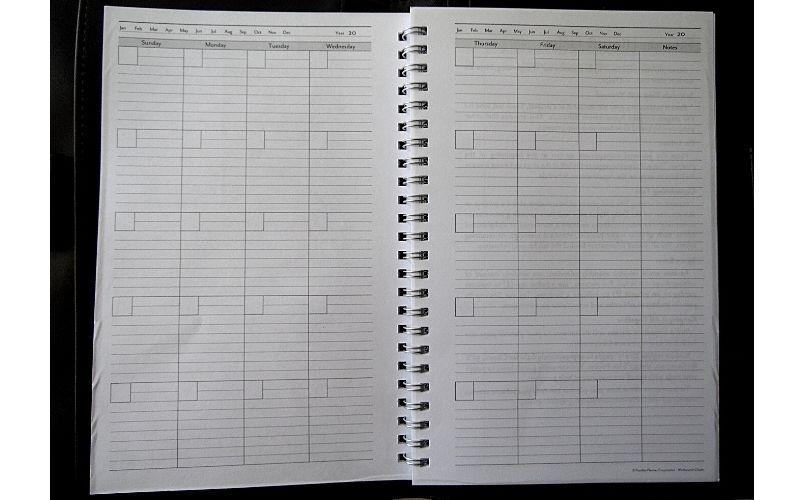
The Daily Undated Wire-bound 31-Day Planner contains a calendar on the very first two pages.
This gives you a full 31 days to utilize for the entire length of the planner.
Since it’s undated, it also gives you the months of the year (which you can circle), the days of the week arranged into columns, spaces where you can write the individual daily dates, and a space where you can write the year.
For me, this section was helpful for keeping track of major events coming up that I’ll want to make sure that I remember (especially if I plan to reference these events when writing down daily goals).
Planner Hints & Helps Page
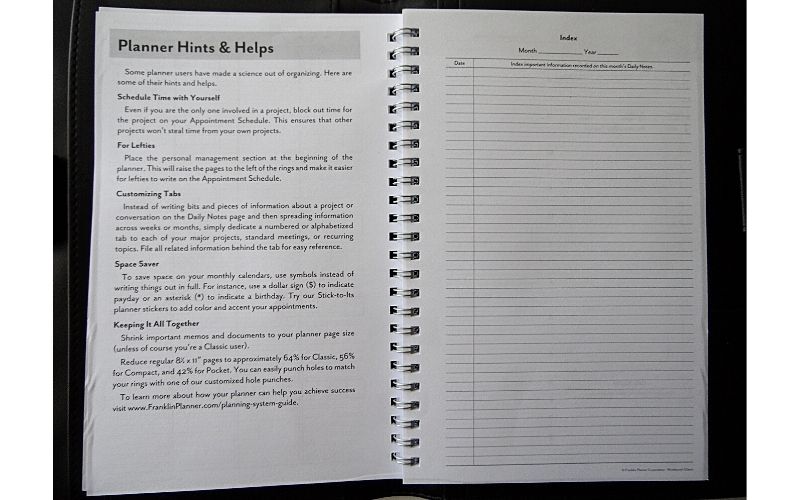
This page basically gives you some tips and tricks that you can utilize to make better use of the planner.
The tips are pretty straightforward—and the page is definitely worth reading over before you begin the process of actually writing things down in the planner.
Index Page
This page basically serves as a place where you can index important bits of information that you may list within the planner that isn’t listed anywhere else.
For example—you could use this to record details about a meeting, some contact information for a client, information about a course you took, etc.
There’s a space where you can write in the month and the year, as well as a column for specific dates to correspond with your indexed information.
Daily Planning Pages
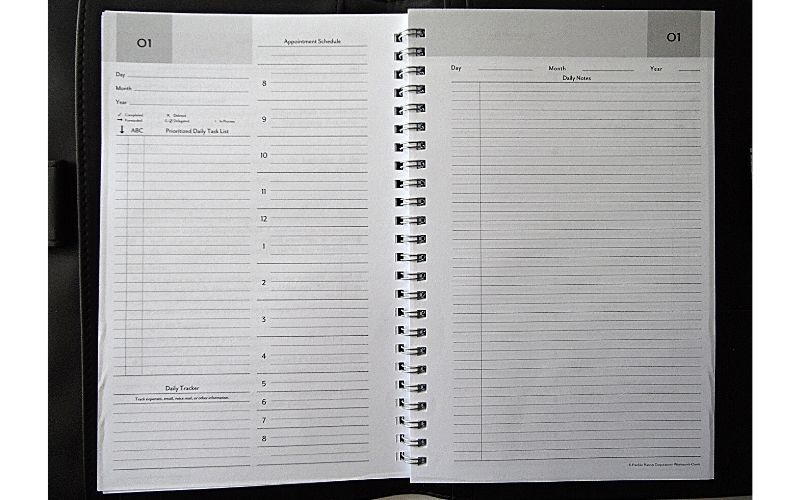
These are the pages that make up the bulk of the Franklin Planner.
They consist of a daily planning page on the left side, and a daily notes page on the opposite side.
If you watch the following video, you’ll get an in-depth look at exactly how to use the prioritized daily task list, the daily tracker, and the appointment schedule.
You’ll also get some great ideas for how to use the notes.
I really liked these pages because they provided a no-nonsense set of tools for helping you to take charge of your day and really take ownership over your time.
The whole focus of this planner seems to be to help you get the most out of your day, and to be maximally effective in the allotted time you have available.
And I feel like the Franklin Planner really succeeded at this.
Master Task List
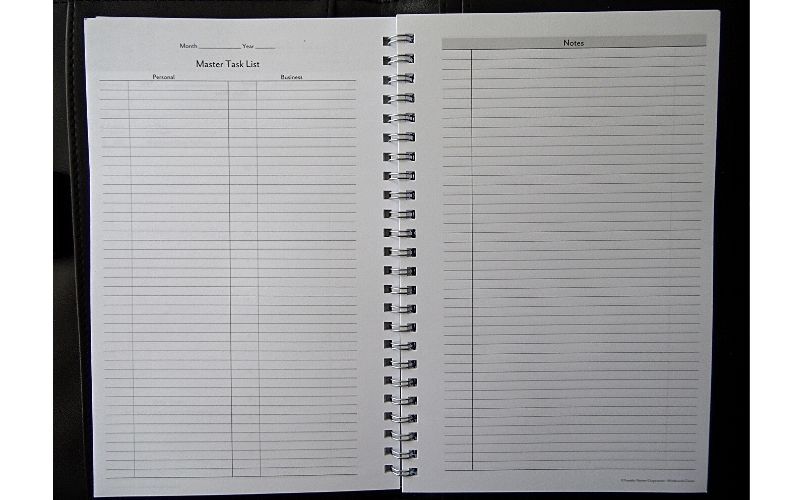
After the daily planning pages, you’ll find a single page called the Master Task List.
The way I like to think of this page is as follows:
It’s kind of like a master file system that you can use each month as a ‘file spot’ for the most important pieces of information living in your brain.
You get a master task list for each month, so you can use this as a place to record vital information about that month. You can also refer back to that task list if you need to reference something for yourself in a later planner entry.
And if you get to the point where you have several months of planner pages lined up in advance, you can also refer forward and record important pieces of information for future months in this task list as well—basically ‘filing it forward’ to give you a means of saving vital information that you may need in an upcoming month.
This is a crucial value add to the Franklin Planner System. And personally, I found it useful. I feel like being able to record something, and then refer back to it in your note-taking and/or planner referencing, is really powerful.
This is an element of the process that I didn’t really utilize with other systems. But Franklin Covey really made this particular part of the process stand out and make sense for me.
Notes Pages
At the end of your planner, you’ll find several ‘notes’ pages. These are basically blank pages that you can use to record information as needed. There’s also a column on the far left side of these pages, which gives you room to record a date (at least, that’s what I would use it for).
These are very open-ended pages that are specifically included so that you can use them for whatever you need them for.
What We Liked About The Franklin Planner
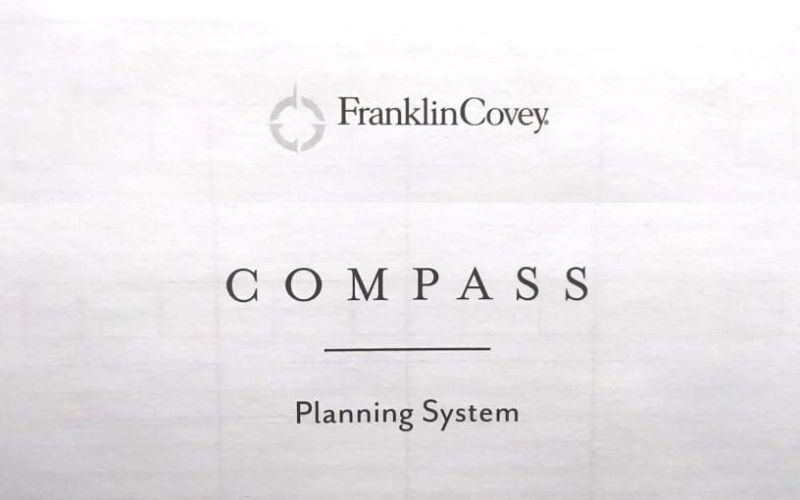
There were a lot of things that I liked about the Franklin Planner system. Let’s go over my top 7 favorite things about it.
1. Their planner products are obviously well-made and beautifully designed.
Their binders/covers are especially high in quality, and are definitely crafted to a high level of value.
2. The system gives you powerful tools that you can use to take command over your time.
If used correctly, this system will absolutely give you a ton of power over how to maximize your time and effort each and every day.
3. The way that Franklin Covey teaches you how to use the Prioritized Daily Task List was in-depth and practical.
It was also insanely powerful. Organizing things according to importance using an A, B, or C ranking, and then giving those things an order with number designations really opens your eyes to exactly what should and what shouldn’t be taking up your time.
You’ll need to consult the training to see exactly what all of this means. But long story short—I felt like this element really helped me to level up my own personal understanding of how to plan my daily tasks.
4. Overall, the Daily Planning Pages were intuitive, well-thought-out, and simple to use.
Once again, you’ll want to consult the training materials to unlock the full power of these materials.
But once you understand why they’re built the way they are, and how to use the system correctly—the implications are obviously powerful and transformative.
5. I like the idea of using one cover or binder, and replacing the used inserts.
To me, this feels less wasteful—and it just makes sense. It also makes it easier to try out different inserts if I feel like doing so, which is really cool. This also empowers you to build a file of older inserts that you can refer back to as needed. They recommend keeping the last 12 months of inserts on-hand as references – and to me, this makes sense.
6. I like the fact that Franklin Planner offers so many different products.
Even though I’ve only tried one of their planners thus-far, I’m really interested in trying out some of the different planner styles and types that they offer.
7. The free online training tools really give you everything you need to use the system correctly and efficiently.
I’m always a big fan of companies that offer free online training—and I wasn’t disappointed with Franklin Planner’s online tools and resources. Their YouTube channel alone offered all kinds of training and resources, and proved to be sufficient in getting me up and running with the system.
What We Didn’t Like About The Franklin Planner System
Honestly, the only thing that I wasn’t incredibly happy about with the Franklin Planner was literally the aesthetic/artistic design of their daily pages.
To me, at first glance, the fonts, inks, and colors used made me feel like it was, overall, styled to look more like a calendar book than a creative journal.
This obviously isn’t a deal-breaker. But one thing that I really pay attention to with planners is how their overall stylistic design lends itself to creativity for me on a personal level. And I personally felt like the overall aesthetic layout of the Franklin Planner was ‘square’ and ‘clunky.’
With that being said, this is in no way a criticism of how it works, or of the quality of the products.
This was purely an aesthetic style thing for me—and is, at most, a minor negative.
It’s certainly not enough of a negative to keep me from using the system in the future.
Franklin Planner Pros And Cons
Here are the basic pros and cons of the Franklin Planner System:
Pros:
- High-quality design
- The system is well-formulated
- It’ll definitely help you to take command of your time every day
- The system will help you to prioritize the most important tasks first
- Online free training materials give you everything you need to learn the system
- Many different insert options give you a lot of room to experiment with different products
Cons:
- The price point is fairly high, especially for the binders and covers
- If you don’t go through the online training, you’ll probably waste the most powerful elements of the system by using it as a simple planner
- Doesn’t address long-term planning or long-term goals
- Aesthetically, the style of the planner wasn’t my favorite
Who Should Use The Franklin Planner?
I believe that the Franklin Planner system is a perfect system for people who are especially interested in making the most of every single day, and of utilizing every available moment to make their day as productive as possible.
The Franklin Planner goes a lot more in-depth with daily task organizing and prioritization than other planners and journals that we’ve reviewed. Therefore, if you’re the type of person who really wants to focus on organizing your day (for example, if you’re a busy professional who tends to deal with distraction and task overload), then this system would be perfect for you.
Who Shouldn’t Use The Franklin Planner?
If what you really want is a full-fledged, fully-rounded planner/goal achievement system that gives you long, medium, and short term goal setting options—and if you’re willing to sacrifice some of the more in-depth and focused details of the daily system found in the Franklin Planner to get them, then this system may not be for you.
The thing about the Franklin Planner is that it really focuses on helping you to organize your day. That’s what it does best, and it does it very well.
But if you’re looking for something that’ll also include tools to help you scope out some further-reaching goals (for example—yearly goals or quarterly goals), then you may be better suited to using something like the Self Journal or the Full Focus Planner.
Our Verdict – Is The Franklin Planner Worth The Cost?
My official opinion is that the Franklin Planner system is really unrivaled when it comes to empowering you to set daily task lists, organize them in terms of priority, beat and overcome distraction, and just in general make the most of every single day.
To put it simply—this is an amazing daily planner system, and I found it to be incredibly useful.
I would absolutely recommend this product to any individual who wants to master each and every day to the fullest, to help make the most of every moment and not waste their time on things that don’t really matter.
In a word—it’s fantastic.
I give it an 8 out of 10!
It’s tough to imagine a system that could facilitate daily planning with any more efficiency.
Conclusion
That’s going to conclude our in-depth Franklin Planner review.
Hopefully, this review has helped you to figure out if this might be the ideal daily goal-setting/planner system for you.
Of course, at the end of the day, the system that you choose is never as important as just deciding to get starting writing down your goals.
So start turning your dreams into goals, and writing down those goals today.
This is how you begin your journey to success and crush it.
Need some help getting started? Not ready to spend money on a goal-setting system quite yet?
Download my weekly goal-setting sheet, print out a few, and give it a try.
You can also sign up for my email list to get my free Goal-Setting Essentials Starter Kit.
You’ve got this. I believe in you.
Now it’s time to get to work.
Best wishes…
Jay O’Donnell
